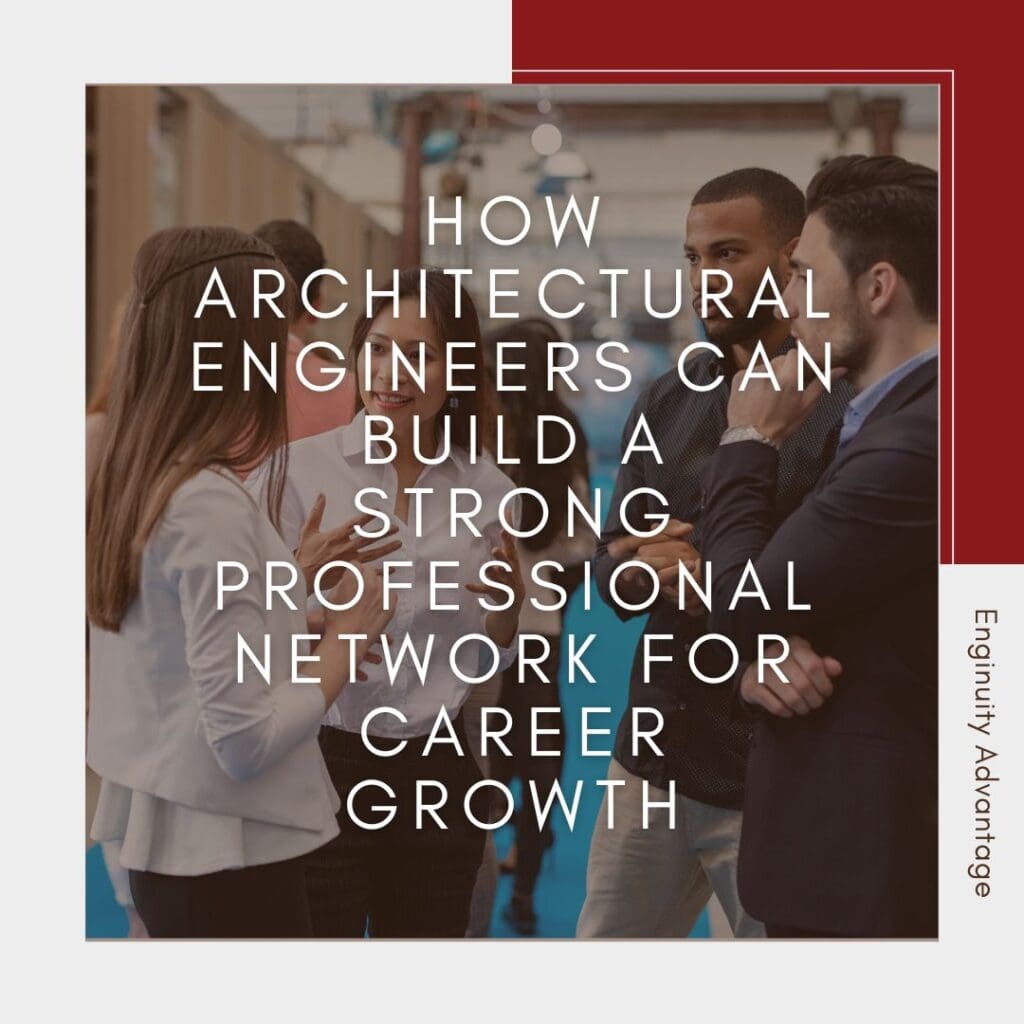How Architectural Engineers Can Build a Strong Professional Network for Career Growth

How to Build and Maintain a Strong Professional Network in the Architecture Industry
The architecture and engineering industries rely heavily on collaboration. For architectural engineers, cultivating professional connections can lead to exciting project opportunities, cross-disciplinary innovations, and long-term career advancement. Unlike architects who often network to secure clients, architectural engineers focus on building relationships within companies and across industries to contribute to successful, sustainable projects. This guide explores practical strategies to help architectural engineers grow and maintain a network that drives both personal and professional success.
The Importance of Networking for Architectural Engineers
Architectural engineering is inherently collaborative, requiring seamless coordination with architects, contractors, urban planners, and other engineers. Networking not only strengthens these relationships but also provides access to valuable resources, insights into industry trends, and opportunities for professional development.
A robust network can lead to career advancements by connecting you with mentors, potential employers, or collaborators on high-profile projects. It also ensures you stay informed about emerging technologies, green building techniques, and innovative engineering practices, keeping your skills sharp and your work relevant in an ever-evolving field.
Building Your Network: A Step-by-Step Approach
Step 1: Attend Industry-Specific Events and Conferences
Participating in events tailored to engineering and interdisciplinary collaboration is one of the most effective ways to meet professionals in your field. Look for conferences hosted by organizations like the American Society of Civil Engineers (ASCE), National Society of Professional Engineers (NSPE), or Structural Engineering Institute (SEI). These events often feature technical workshops, panel discussions, and networking sessions designed to foster connections.
Before attending, research key speakers and topics of interest. Prepare thoughtful questions or talking points that highlight your expertise and enthusiasm for the industry. After meeting new contacts, follow up with a personalized message on LinkedIn or via email to strengthen the connection.
Step 2: Join Professional Organizations and Online Communities
Membership in engineering associations can open doors to mentorship programs, industry insights, and exclusive networking opportunities. Organizations like ASCE or SEI often host local chapter events, webinars, and forums where you can engage with like-minded professionals.
Additionally, consider joining LinkedIn groups or online forums dedicated to architectural engineering. These platforms allow you to participate in technical discussions, exchange ideas, and establish your presence as a knowledgeable and collaborative professional.
Step 3: Collaborate with Academia
Maintaining ties with academic institutions is a powerful way to expand your network. Guest lecturing, mentoring students, or serving as a juror for engineering design reviews connects you with faculty, students, and industry professionals. These relationships not only contribute to the next generation of engineers but also provide opportunities to collaborate on innovative research and projects.
Nurturing Your Connections
Building a network is only the first step; maintaining those relationships requires consistent effort and thoughtful communication.
Regular Communication
Stay in touch with your professional contacts by sharing relevant articles, congratulating them on career milestones, or updating them about your own projects. These small gestures keep your relationships active and meaningful. Scheduling occasional virtual coffee chats or attending informal meetups can also reinforce connections and demonstrate your reliability as a professional.
Providing Value
Networking should always be a two-way street. Offer value to your connections by sharing insights, making introductions, or collaborating on projects. For instance, if a colleague is navigating a complex engineering challenge, offer your perspective or suggest resources that could help. Building goodwill positions you as a trusted and supportive member of the professional community.
Leveraging Technology for Networking
In today’s digital landscape, technology plays a pivotal role in professional networking. Platforms like LinkedIn, research-focused forums, and project management tools are excellent resources for connecting with peers and showcasing your expertise.
Social Media as a Networking Tool
LinkedIn is an indispensable platform for architectural engineers. Share technical insights, comment on industry trends, and connect with professionals across disciplines. This visibility not only enhances your credibility but also positions you as an engaged and informed industry participant.
Virtual Events and Webinars
Virtual conferences and webinars provide access to global audiences and cutting-edge discussions. Many events include interactive breakout sessions or networking rooms, allowing you to build connections without geographic limitations. By actively participating, you can expand your network and gain exposure to diverse perspectives and practices.
Overcoming Common Networking Challenges
Networking can feel intimidating, especially for those new to the industry or naturally introverted. However, with the right mindset and strategies, these challenges can be overcome.
Building Confidence
Start small by setting manageable goals, such as having meaningful conversations with two or three individuals at an event. Practice active listening and genuine engagement to make your interactions more impactful. Over time, these efforts will build your confidence and help you expand your network more comfortably.
Balancing Time and Effort
Networking doesn’t have to be overwhelming. Dedicate a set amount of time each week to engaging with your professional community, whether that’s attending events, contributing to discussions online, or following up with contacts. Consistency is more important than quantity.
Subtle Strategies for Expanding Your Network
Architectural engineers often build connections organically through project-based collaborations. Working closely with architects, contractors, and urban planners on multidisciplinary projects fosters trust and demonstrates your expertise, leading to lasting professional relationships.
Engage with platforms like Enginuity’s network, which cater to engineering and design professionals. These tools provide targeted opportunities to connect with individuals and organizations aligned with your career goals.
The Blueprint for Networking Success
In the architectural engineering field, your network is as vital as your technical skills. Building and maintaining strong professional relationships opens doors to new opportunities, enhances your credibility, and fosters collaboration that drives innovation and success.
By leveraging industry events, professional organizations, and digital tools, you can cultivate a network that supports your career aspirations while contributing to the broader engineering community. In a field where teamwork and innovation reign supreme, a strong professional network isn’t just an advantage, it’s a necessity.
Unlock Dream Careers & Elite Talent: Just One Click Away!


